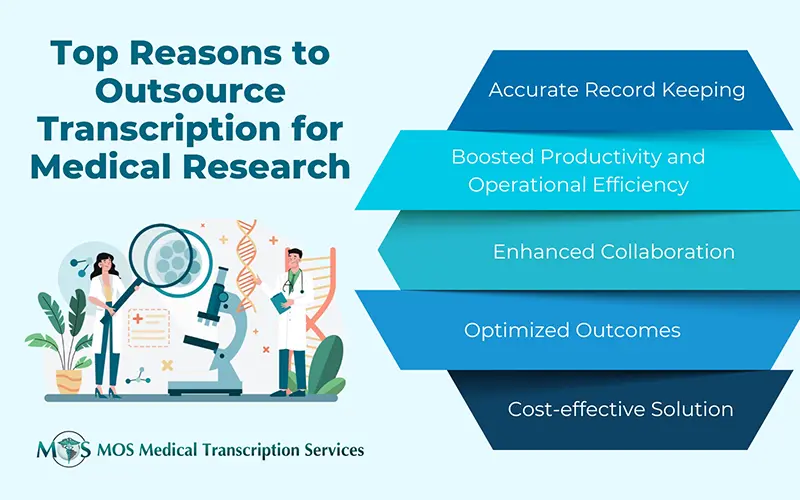 Medication adherence is crucial to properly manage symptoms, reduce adverse reactions, and improve quality of life. Medical transcription services are available to help physicians manage diagnoses, lab reports, visit notes, and medication directions in electronic health records (EHRs). However, today, medication non-adherence has become a pressing concern.
Medication adherence is crucial to properly manage symptoms, reduce adverse reactions, and improve quality of life. Medical transcription services are available to help physicians manage diagnoses, lab reports, visit notes, and medication directions in electronic health records (EHRs). However, today, medication non-adherence has become a pressing concern.
In September 2016, the Centers for Disease Control and Prevention (CDC) reported that one in four Medicare participants age 65 or older-up to 5 million people-do not take their blood pressure medicine as directed. According to the CDC, 20 to 30 percent of prescriptions for chronic health conditions are never filled, and about half are not taken as prescribed.
In addition to having a negative impact on the patient’s health and well-being, non-adherence is also associated with significant increase in total health care costs. A recently published catalyst.nejm.org article reports that medication non-adherence is associated with over $300 billion of avoidable health care costs in the U.S, accounting for 10 percent of societal costs. The report notes that about 50 percent of patients with chronic diseases do not take their medication as prescribed. Let’s look at the causes of medication non-adherence and expert views on how health care professionals can engage patients to take their prescribed medications.
Why don’t patients follow their physician’s instructions on medications? There are many reasons for this:
- patient’s social and economic status or education level
- failure to pick up a medication at the pharmacy
- factors related to the characteristics of the disease
- unpleasant side effects
- complexity and duration of treatment
- failure to understand instructions
- forgetting medication instructions
- poor provider communication
- frequency of expected intake
- complexity of treatment
- severity of the disease
- patient depression or stress
- physical or financial obstacles to drug access
A Medscape article reports that studies show that the risks of non-adherence are higher when people have to take medications over long periods and are less likely to be adherent when the daily doses increase from one to four pills. That is sometimes, patients just get tired of taking pills!
How can medication adherence be improved? Let’s see what the experts have to say.
Predictive Analytics and Integrated Data Systems
The catalyst.nejm.org report discusses the role of predictive analysis, electronic medical records data and patient reported outcomes (PROs) in improving medication adherence. According to the report, solutions need to focus on patient education on medication goals, reason for prescribing the medication, administration of medication, and alerting the patient about potential problems or side effects that should be expected.
Mobile Medication Management
The latest solution is mobile medication management, one that is critical for physicians’ practices in 2018, according to a www.hitconsultant.net article. Mobile medication management allows physicians and prescribers interact with patients more easily and speed up charting and documentation of patient interactions, whether in or out of the office.
To harness the power of mobile technology, physicians need ready access to tools for e-prescribing, electronic prescribing of controlled substances (EPCS), prescription drug monitoring programs (PDMPs), medication history, clinical trial adjudication, secure collaboration, price transparency, financial assistance, medication adherence monitoring and patient-validated medication history. Mobile medication management enables providers to submit prescription orders conveniently as they are visiting with patients, thereby improving prescription accuracy. Mobile medication management can improve patient outcomes, safety, and loyalty, enhance physician productivity and practice throughput, and also allow patients to access their records in the event of natural disasters.
Pharmacists and Medication Adherence
An analysis by Johns Hopkins Medicine showed that pharmacists play an integral role in improving medication adherence. Based on this analysis, a recent report in www.specialtypharmacytimes.com lists five simple strategies that pharmacists can use to promote adherence:
- Encourage patients to only use one pharmacy: Pharmacists can mitigate adverse events by telling patients to use one pharmacy. Ensuring that all patient records are at a single location will help pharmacists mitigate adverse events, better track progress over time and help patients adhere to new therapeutic recommendations.
- Advise patients on medication reminders: Patients can better organize medications with a pill box equipped with compartments for each day of the week. The visual schedule of the pill box will inform the patient instantly if they did not take their medication. Posting a reminder on the refrigerator is another good idea.
- Help in medication synchronization: Specialty pharmacies can play an important role in counseling patients on managing medications and staying adherent. They can do this by discussing the option of early refills whenever possible.

- Recommend that patients keep a medication list: Pharmacists should advise patients to keep a medication list and give a copy to their physician. In the event of an emergency, providers can use this list to quickly determine potential side effects or interactions.
- Review meds annually: Patients ask their pharmacy to review all their medications on an annual basis. This will ensure that patients are on the right track with their medicines and supplements.
A recent study showed that lowering medication costs could be the key to adherence. According to the research, patients are more likely to fill prescriptions when their drugs are less expensive, although they may still skip doses.
Medication information is one of the most important types of clinical data in electronic medical records (EMRs). EMR/EHR medical transcription outsourcing can ensure accurate documentation of all medications administered to patients. Medical transcription service companies enable physicians to maintain consistency in the EMR with up-to-date problem list of current and active diagnoses, active medications and allergy lists. By ensuring quality data, a reliable service provider helps health care professionals to deliver superior quality care, manage risks, and control costs.


